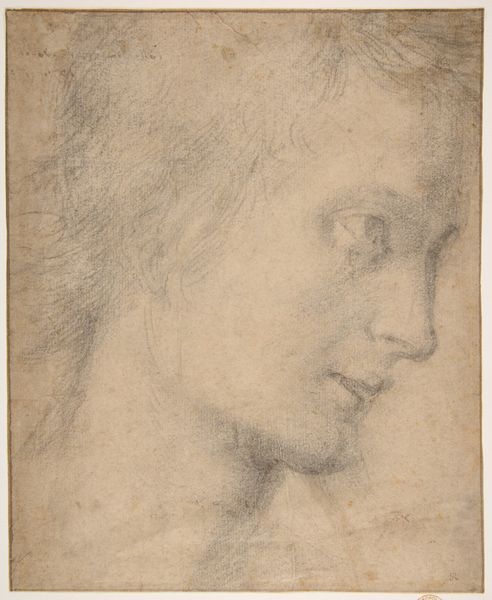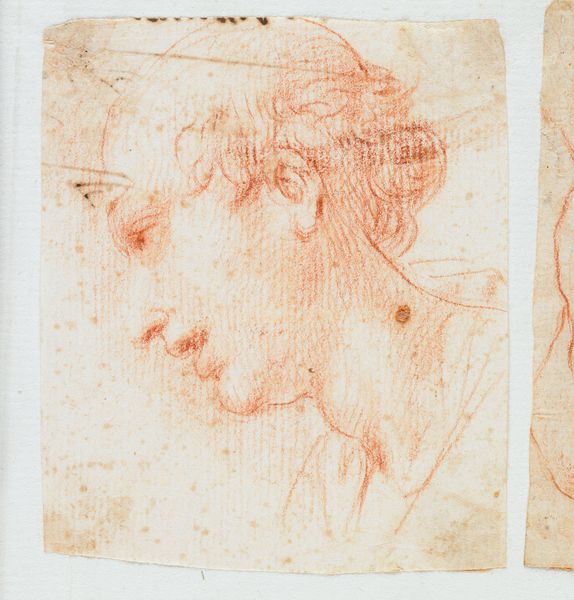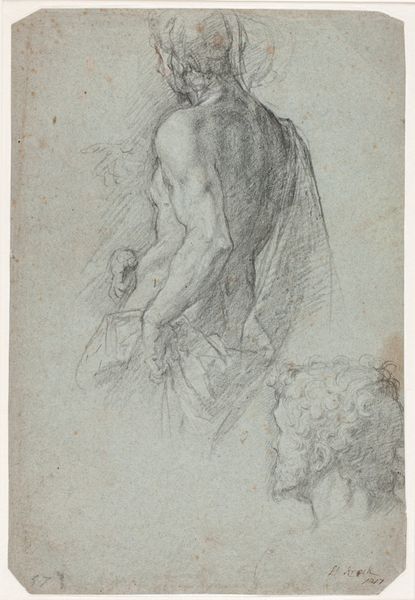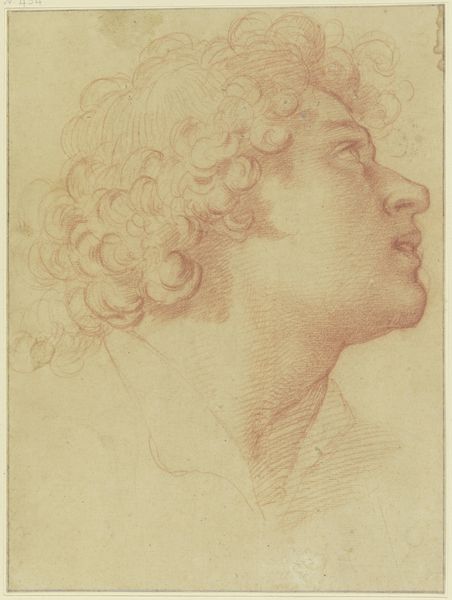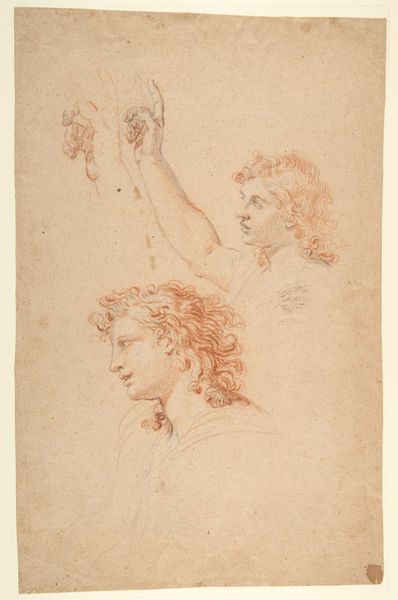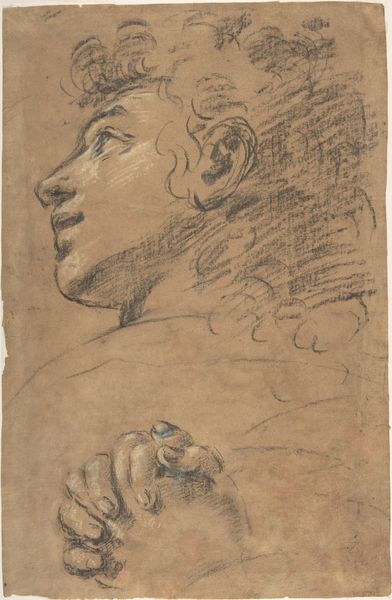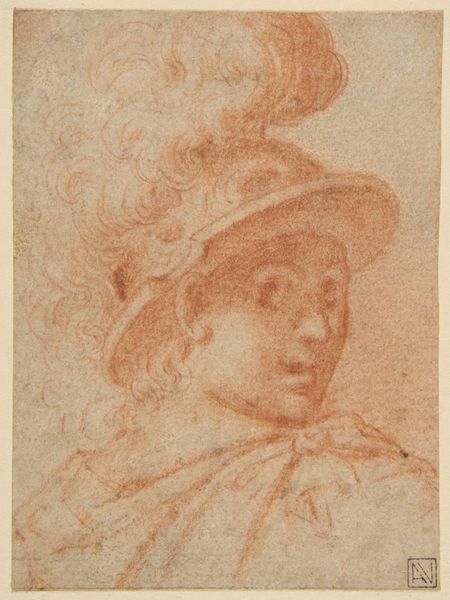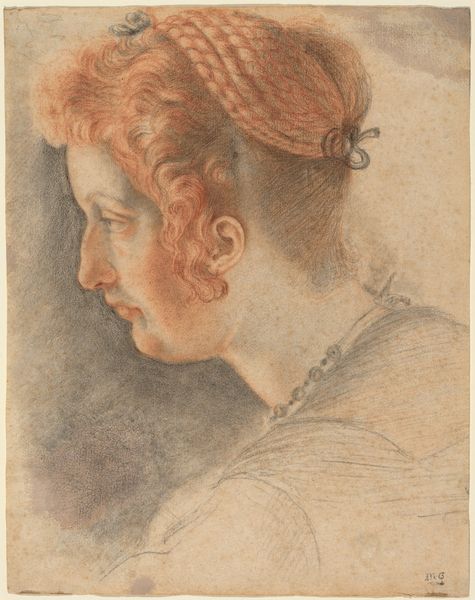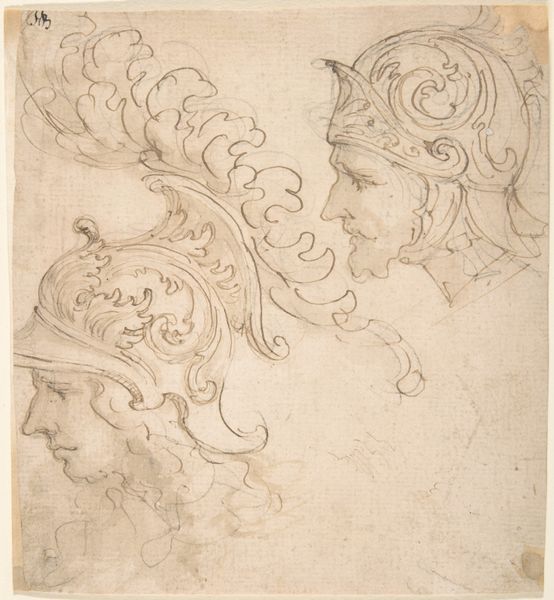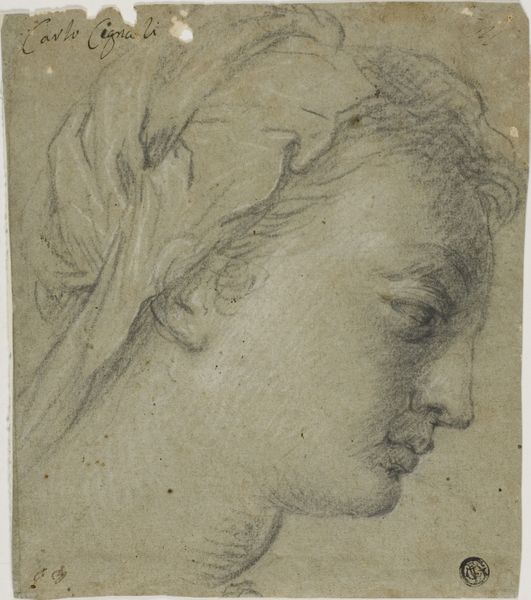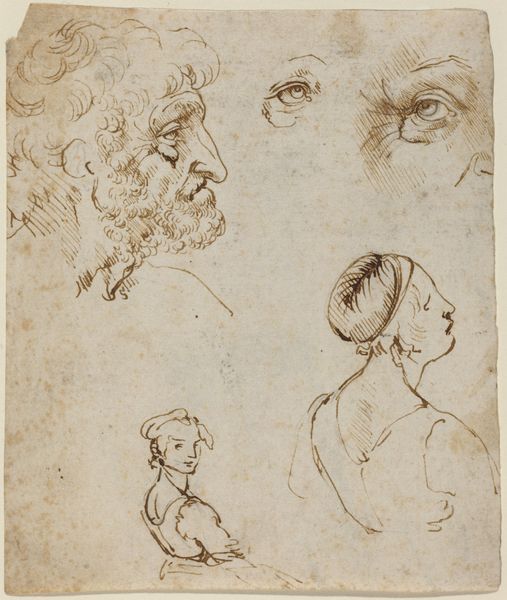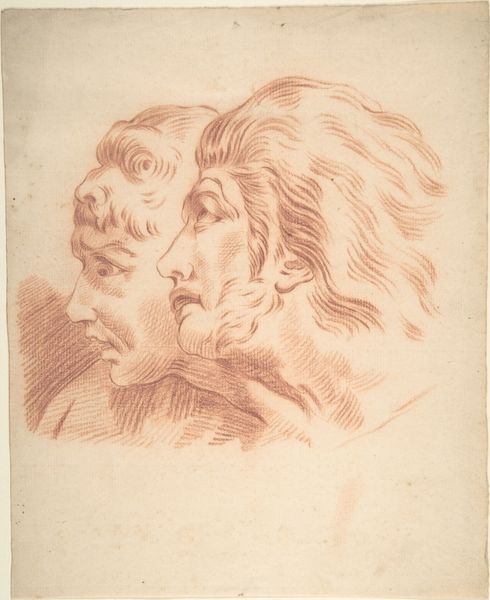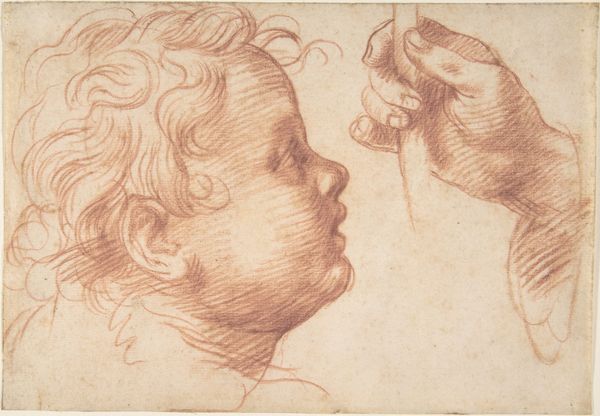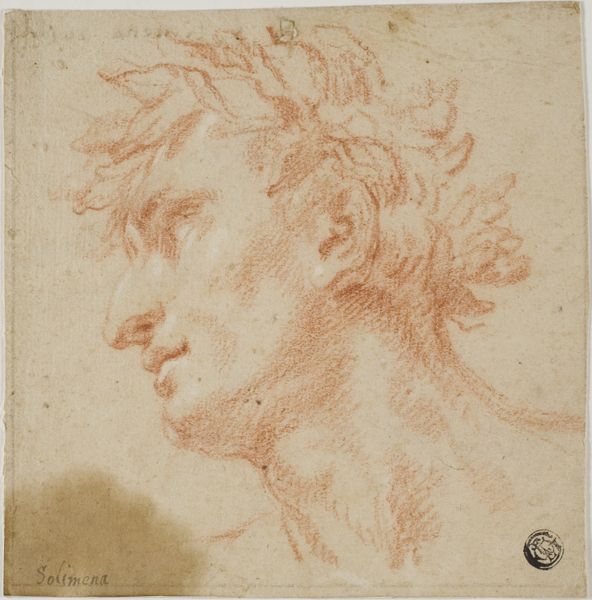
Three Heads after Michelangelo's Frescoes in the Sistine Chapel 1500 - 1600
0:00
0:00
drawing, print, ink, pen
#
portrait
#
drawing
# print
#
charcoal drawing
#
11_renaissance
#
ink
#
pencil drawing
#
pen
#
italian-renaissance
Dimensions: 9 3/4 x 8 1/2in. (24.8 x 21.6cm)
Copyright: Public Domain
Curator: Here we have "Three Heads after Michelangelo's Frescoes in the Sistine Chapel," a Renaissance-era drawing dating from 1500 to 1600. The work presents three distinct head studies, seemingly drawn from Michelangelo's iconic frescoes. It is executed in ink. What are your first thoughts? Editor: There’s an immediacy that strikes me. The lines feel very raw and alive. Looking at these figures – so different from each other – I'm struck by their apparent disconnect. There's no shared gaze or implied relationship. They seem isolated, suspended in time and space. Curator: Interesting. Consider though that they may not have been intended as related at all. Drawing after established masters like Michelangelo was part of an artist's training, or served as intellectual study and remembrance. Copying was considered vital to internalizing classical form and content, therefore upholding cultural continuity and the integrity of established conventions. Editor: I get that. But knowing what we do about the social hierarchies during the Renaissance, and the Church's control over representation, especially of the human form, it’s hard for me not to wonder whose faces were deemed worthy of this kind of study and preservation. There is a tension between their artistic merit, and the patriarchal framework surrounding the artmaking. Curator: Indeed, art and culture are always intertwined, and your reading resonates, but this type of exercise wasn’t necessarily connected to that. Each of these heads embodies distinct archetypes present in Michelangelo's work and the Judeo-Christian narrative. Think of the varying roles and meanings within the grand narratives being visually cemented through repeated study. Editor: Archetypes—interesting point. The wizened elder at the top, etched with time and perhaps wisdom, versus the youthful, almost androgynous face below. Their inclusion, or, perhaps more pointedly, exclusion in larger narratives of the era says much about who held power. What stories were valorized, whose bodies were considered aesthetically important or 'heroic', it all mattered. Curator: These works prompt us to recognize the lineage of form. It's not just about individual artistry but the transmission of powerful images, almost like a visual heredity. It’s why art has enduring value, shaping our memories and thoughts through symbols and signs. Editor: It does make me reflect on the power structures underpinning those symbols—who defines them, who gets to replicate them, and to what ends. Thank you for revealing those dimensions of history made visible through artistic skill.
Comments
No comments
Be the first to comment and join the conversation on the ultimate creative platform.
